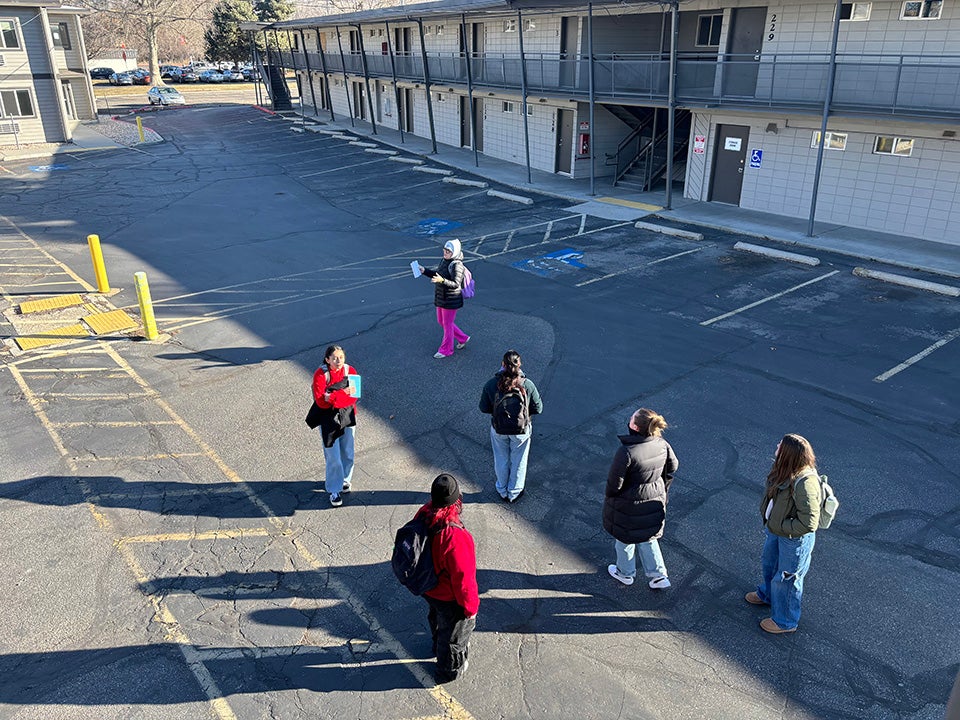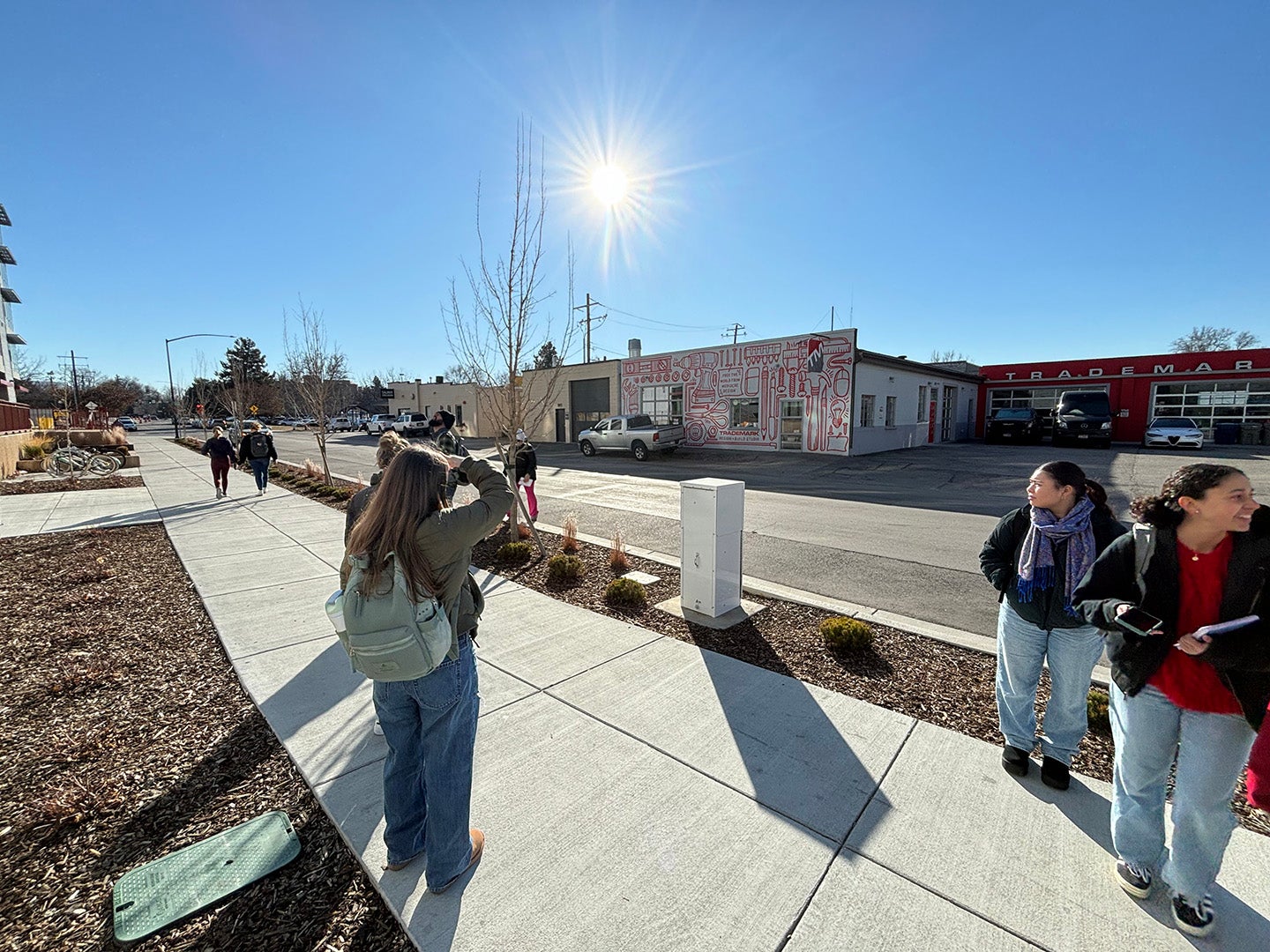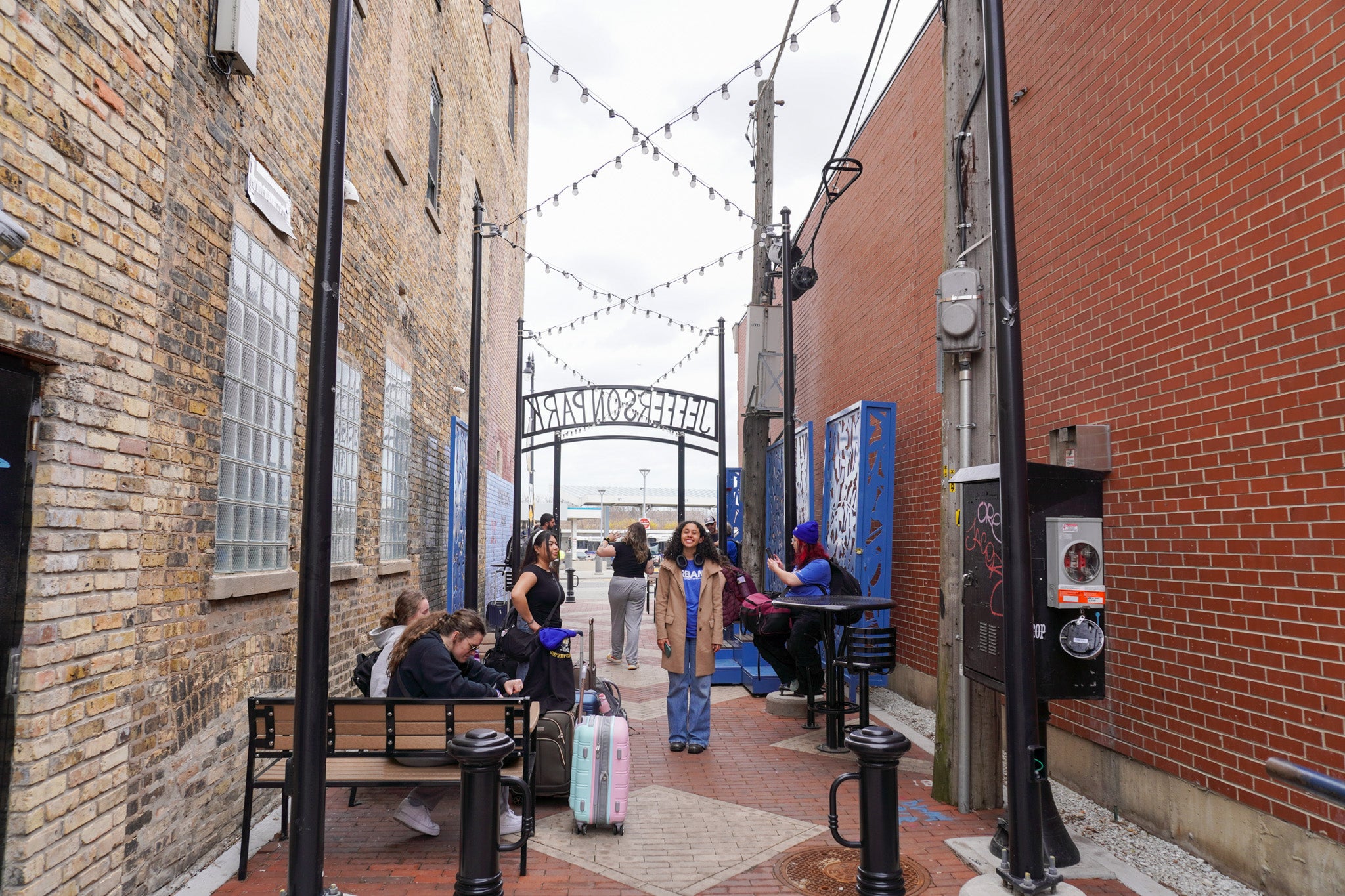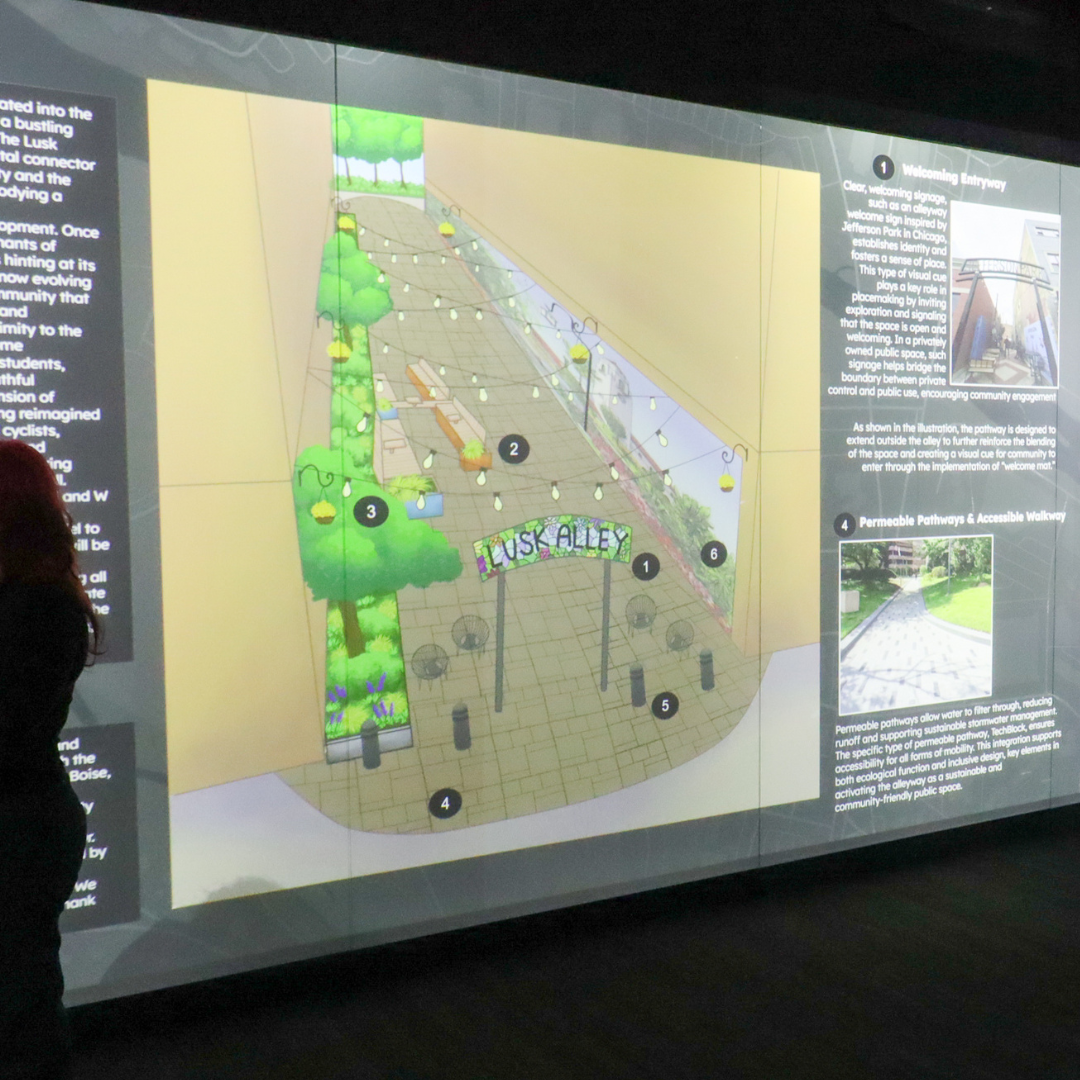As the Treasure Valley grows, so do opportunities for unique urban design. The urban studies field school course at Boise State looks at place-making and problem-solving in local communities, studying how urban planning affects the vitality of spaces and how Boise’s design compares to other cities. The semester-long class allows students to apply classroom learning to the real world.
This year’s field school focused on Boise’s Lusk District, a densely populated area just walking distance from campus. Located across Capitol Boulevard, the area is home to hundreds of Boise State students. Apartment complexes such as Greenleaf River Edge, Uncommon, and, more recently, Boise State’s own Osprey residence hall are all situated in this neighborhood.


Urban studies students were tasked with investigating potential urban designs for the Lusk District, starting with data collection on current sentiments about the area through on-the-street interviews and a survey. The research found that participants were most concerned with issues around safety, accessibility and community building in the area.
After conducting research in Boise, the class traveled to Chicago, where they visited several sites in order to better understand how urban planners design the city and gain ideas for their project back home. One such site was Jefferson Park Alley, a mixed-use corridor near one of Chicago’s public transportation stops. The alley features benches, patio tables, chairs and design elements like cobblestone streets and brightly painted metalwork. The students also had the opportunity to visit and compare ideas with University of Chicago students in their urban planning program.

After a jam-packed trip, the students’ minds were racing with ideas for the Lusk District. Based on their field research and takeaways from the Chicago visit, the students focused on business activation, safety and accessibility in their design plans. Some of the key elements they incorporated into their final design included seating, lighting, bollards, pavement markings, native Idaho plants and a mural depicting the Boise Train Depot, an easily recognizable landmark.

After finalizing their designs, students worked to create a video about their project and a formal presentation, which was displayed on the walls of Boise State’s Stein Luminary. While construction in the Lusk District won’t be starting until 2026, the urban studies field school students’ designs provide a well-informed recommendation for revitalizing one of Boise’s fastest-growing neighborhoods.